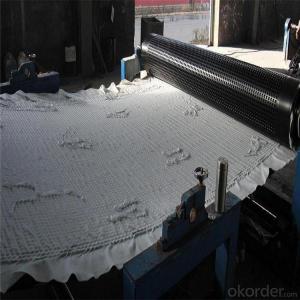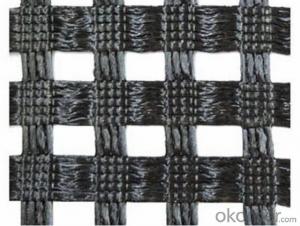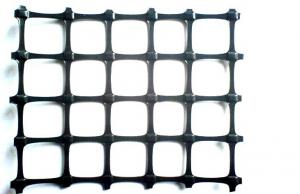PP Biaxial Geogrid with High Tensile Strength Manufacturer
- Loading Port:
- Qingdao
- Payment Terms:
- TT OR LC
- Min Order Qty:
- 10000 g/m²
- Supply Capability:
- 100000 g/m²/month
OKorder Service Pledge
OKorder Financial Service
You Might Also Like
Product Specification---PP Biaxial Geogrid
Introduction:
Biaxial geogrid, made of high molecular polymer, is extruded into sheet and then punched into regular mesh pattern, and finally stretched in longitudinal and transverse directions.
Features:
1. With high tensile strength in longitudinal and transverse directions
2.This structure can provide an chain system of more effective force bearing and spreading for the soil.
Application:
Mainly applied in highway, railway, slope protecting projects etc.
1)strengthen land loading capacity and extend its service life.
2) convenient to construct ;
reducing project cost and maintenance cost.
Properties of PP Biaxial Geogrid (Test Method: ASTM D 6637)
Specification | EGA30-30 | EGA50-50 | EGA80-80 | EGA100-100 | EGA120-120 | |
Mesh size(mm) | 25.4×25.4 Or 12.5×12.5 | |||||
Breaking strength ≥(KN/m) | Warp direction | 30 | 50 | 80 | 100 | 120 |
Across warp | 30 | 50 | 80 | 100 | 120 | |
Elongation at break ≤(%) | Warp direction | 3 | ||||
Across warp | 3 | |||||
Elasticity modulus(GPA) | 67 | |||||
Thermal tolerance | -100~280℃ | |||||
Width | 1~6m | |||||
Item Spec | TGSG 15-15 | TGSG 20-20 | TGSG 25-25 | TGSG 30-30 | TGSG 35-35 | TGSG 40-40 | TGSG 45-45 | TGSG 50-50 | ||
Tensile Strength ≧(Kn/m) | MD | 15 | 20 | 25 | 30 | 35 | 40 | 45 | 50 | |
TD | 15 | 20 | 25 | 30 | 35 | 40 | 45 | 50 | ||
Nominal Elongation ≦(%) | MD | 15 | ||||||||
TD | 13 | |||||||||
Tensile Strength at 2% Strain ≧(Kn/m) | MD | 5 | 7 | 9 | 10.5 | 12 | 14 | 16 | 17.5 | |
TD | 5 | 7 | 9 | 10.5 | 12 | 14 | 16 | 17.5 | ||
Tensile Strength at 5% Strain ≧(Kn/m) | MD | 7 | 14 | 17 | 21 | 24 | 28 | 32 | 35 | |
TD | 7 | 14 | 17 | 21 | 24 | 28 | 32 | 35 | ||
Junction Efficiency (%) | 93 | |||||||||
Width ≦(m) | 6 | |||||||||
Note: MD: Machine direction
TD: Transverse direction
Images of PP Biaxial Geogrid
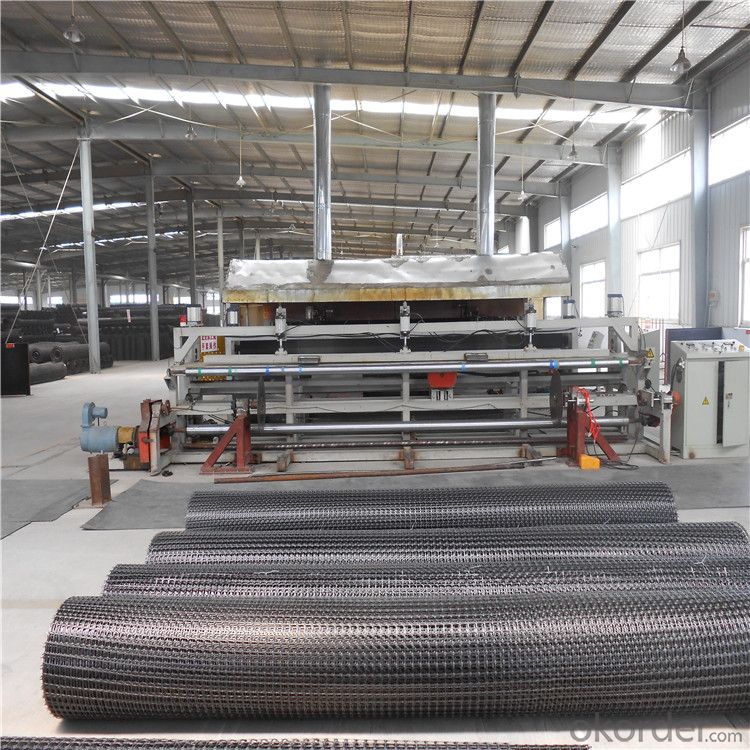

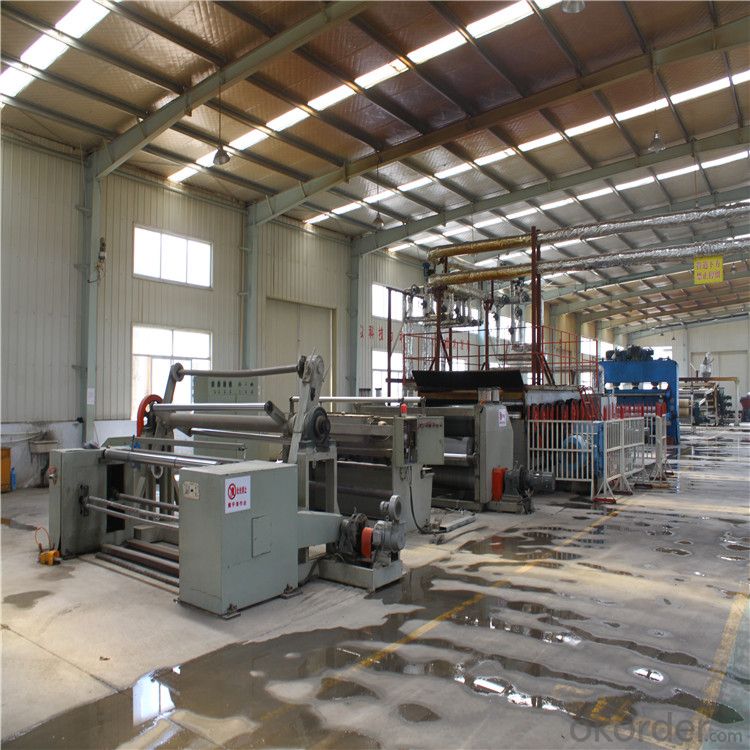

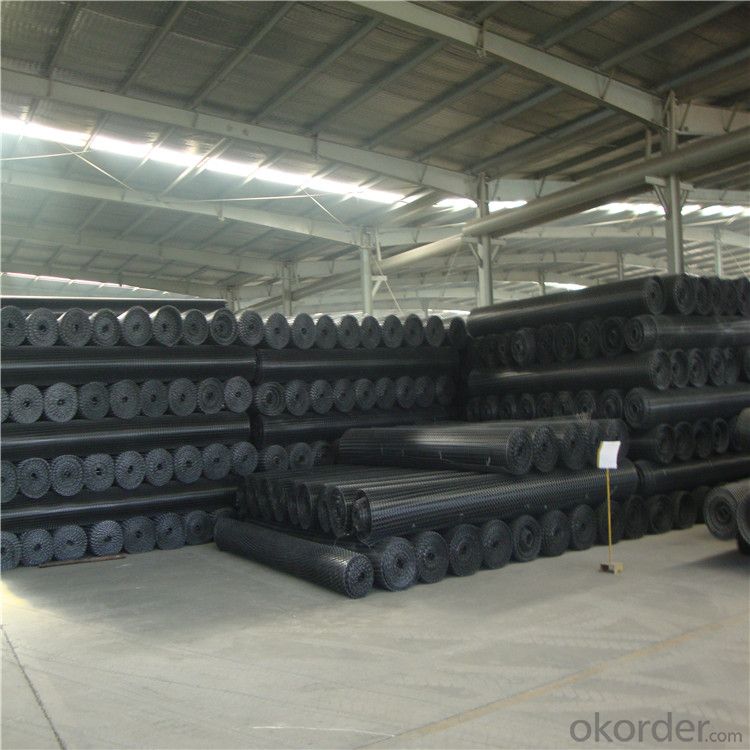

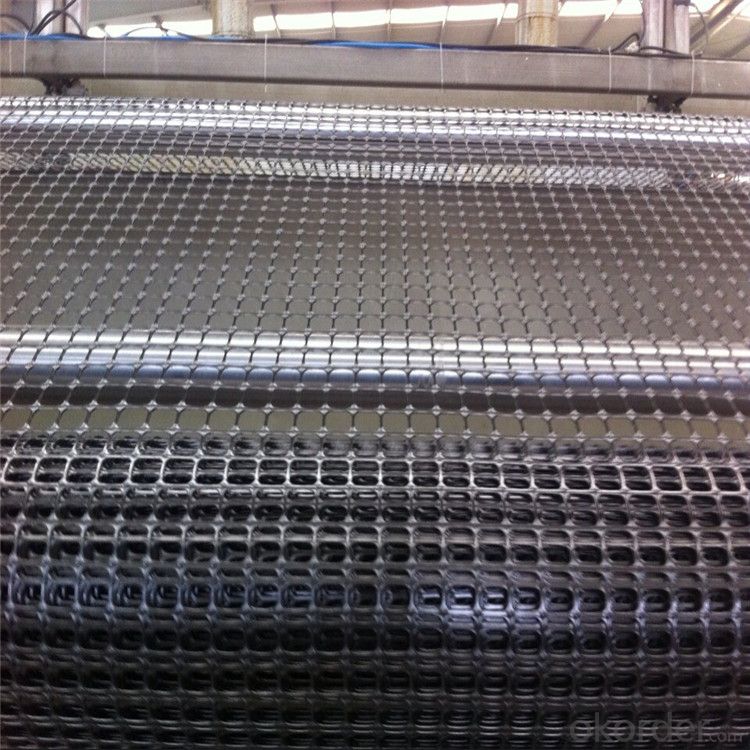
- Q:Can geogrids be used in retaining walls for industrial facilities?
- Yes, geogrids can be used in retaining walls for industrial facilities. Geogrids are commonly used in the construction of retaining walls to enhance stability, improve soil reinforcement, and provide long-term durability. Industrial facilities often require sturdy and reliable retaining walls to support heavy loads and ensure the safety of the structure. Geogrids offer an effective solution by distributing the forces exerted on the retaining wall and preventing soil erosion, thereby improving the overall performance and longevity of the wall in industrial settings.
- Q:Can geogrids be used in reinforced concrete structures?
- Yes, geogrids can be used in reinforced concrete structures. Geogrids are commonly used as a reinforcement material in various construction applications, including concrete structures. They are typically used to enhance the structural integrity, stability, and load-bearing capacity of the concrete by providing additional tensile strength and reducing cracking. Geogrids are especially effective in applications where soil conditions are poor or unstable, as they help to distribute loads and prevent soil movement or settlement.
- Q:Can geogrids be used in retaining walls?
- Yes, geogrids can be used in retaining walls. Geogrids are commonly used as a reinforcement material in retaining walls to enhance their stability and strength.
- Q:How do geogrids improve the performance of geosynthetic reinforced slopes?
- Geogrids improve the performance of geosynthetic reinforced slopes by providing reinforcement and stability to the soil mass. They distribute the load more evenly, reducing stress concentrations and preventing soil movement. This reinforcement increases the slope's resistance to erosion, slope failure, and overall deformation, enhancing its overall performance and longevity.
- Q:Longitudinal and transverse tensile strength more than 60kn/m which has several geogrid
- Glass fiber, polyester, plastic steel, PP, single and double, have 60 specifications.
- Q:What are the benefits of using geogrids in retaining walls?
- Geogrids offer several benefits in retaining walls, including increased stability, improved load distribution, and enhanced soil reinforcement. These geosynthetic materials help to prevent soil erosion and shifting, thereby increasing the overall strength and durability of the retaining wall. Additionally, geogrids promote proper drainage and reduce the risk of water build-up behind the wall, which can further enhance its performance and longevity.
- Q:Are geogrids suitable for reinforcing landfill liners?
- Yes, geogrids are suitable for reinforcing landfill liners. These high-strength materials can enhance the stability and integrity of the liner system by providing additional reinforcement and preventing soil erosion. Geogrids also improve the overall performance and longevity of landfill liners, making them a reliable choice for reinforcing purposes.
- Q:How do geogrids help in reducing settlement of foundations?
- Geogrids help in reducing settlement of foundations by providing additional tensile strength and stability to the soil. They act as a reinforcement layer, distributing the load more evenly across the foundation, thus minimizing settlement. Additionally, geogrids enhance the overall stability of the soil, preventing lateral movement and potential soil erosion, which can also contribute to settlement.
- Q:Are geogrids effective in stabilizing riverbanks?
- Yes, geogrids are effective in stabilizing riverbanks. Geogrids provide reinforcement and prevent soil erosion, helping to maintain the stability and integrity of riverbanks. They can withstand high water flow and offer long-term durability, making them an efficient solution for stabilizing riverbanks.
- Q:Can geogrids be used in temporary retaining walls?
- Yes, geogrids can be used in temporary retaining walls. Geogrids are commonly used in retaining walls to provide stability and reinforcement to the structure. They can be particularly useful in temporary retaining walls as they offer strong tensile strength and prevent soil erosion, ensuring the wall remains stable during its intended lifespan.
1. Manufacturer Overview |
|
|---|---|
| Location | |
| Year Established | |
| Annual Output Value | |
| Main Markets | |
| Company Certifications | |
2. Manufacturer Certificates |
|
|---|---|
| a) Certification Name | |
| Range | |
| Reference | |
| Validity Period | |
3. Manufacturer Capability |
|
|---|---|
| a)Trade Capacity | |
| Nearest Port | |
| Export Percentage | |
| No.of Employees in Trade Department | |
| Language Spoken: | |
| b)Factory Information | |
| Factory Size: | |
| No. of Production Lines | |
| Contract Manufacturing | |
| Product Price Range | |
Send your message to us
PP Biaxial Geogrid with High Tensile Strength Manufacturer
- Loading Port:
- Qingdao
- Payment Terms:
- TT OR LC
- Min Order Qty:
- 10000 g/m²
- Supply Capability:
- 100000 g/m²/month
OKorder Service Pledge
OKorder Financial Service
Similar products
New products
Hot products
Hot Searches
Related keywords





